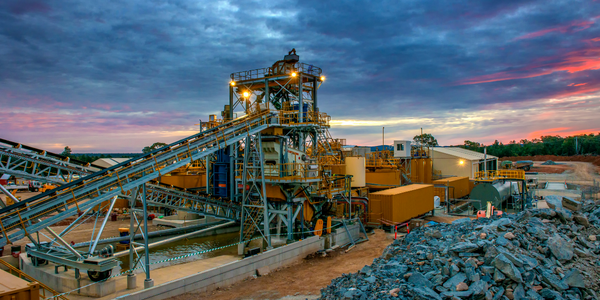Technology Category
- Analytics & Modeling - Digital Twin / Simulation
- Sensors - Haptic Sensors
Applicable Industries
- Equipment & Machinery
- Metals
Applicable Functions
- Logistics & Transportation
- Procurement
Use Cases
- Manufacturing Process Simulation
- Virtual Reality
About The Customer
The customer in this case study is Süddeutsche Gelenkscheibenfabrik GmbH & Co. KG (SGF), a German company that specializes in the production of elastic couplings. These couplings are used in a variety of industries, including automobile, power, and manufacturing. The elastic couplings of SGF are designed to reduce vibrations and compensate for axis misalignment, while simultaneously improving the fatigue strength of the complete machine. However, the company faced a challenge in assessing the fatigue strength of the metal parts of these couplings due to their nonlinear characteristics and the large cycle number of the radial load.
The Challenge
Elastic couplings, frequently used in industries like automobile, power, and manufacturing, present a unique challenge due to their nonlinear characteristics, relative rotation, and large cycle number of the radial load. These peculiarities do not allow the usage of the superposition principle of loads, meaning that every possible combination of loads (axial force, radial force, and torsional torque) must be separately considered. This results in a large number of load cases and consequently a large number of strength assessments. The simple assessment of the superimposed stress states, resulting from a single unit load, would lead to false results, possibly showing a higher component strength than in reality, which could result in a failure of the part. Therefore, all load combinations must be simulated and subsequently assessed against the fatigue strength accordingly.
The Solution
The solution to this challenge involves a three-step method. First, the actual forces and torques applied to the metal flanges resulting from the loads on the coupling are determined by means of a multibody simulation for every possible load combination. These forces and torques are then transferred to a FEM analysis in the second step to determine the stress states for each load combination. In the third step, the appropriate load combinations are determined and a static and fatigue strength assessment according to the FKM guideline is conducted with S-Life FKM. The MSC Marc FEM software is used to perform the FEM analyses due to the simple table-driven load definition. With this approach, all possible load combinations are compiled in tables, one for each force and torque direction respectively. All possible load combinations are therefore simulated by a single FEM-load case with the usage of such tables. The transfer of forces and torques from the MBS software to MSC Marc is done with the help of scripts, resulting in a very simple and fast process for the first two steps of the strength assessment.
Operational Impact
Quantitative Benefit

Case Study missing?
Start adding your own!
Register with your work email and create a new case study profile for your business.
Related Case Studies.

Case Study
Smart Water Filtration Systems
Before working with Ayla Networks, Ozner was already using cloud connectivity to identify and solve water-filtration system malfunctions as well as to monitor filter cartridges for replacements.But, in June 2015, Ozner executives talked with Ayla about how the company might further improve its water systems with IoT technology. They liked what they heard from Ayla, but the executives needed to be sure that Ayla’s Agile IoT Platform provided the security and reliability Ozner required.

Case Study
IoT enabled Fleet Management with MindSphere
In view of growing competition, Gämmerler had a strong need to remain competitive via process optimization, reliability and gentle handling of printed products, even at highest press speeds. In addition, a digitalization initiative also included developing a key differentiation via data-driven services offers.

Case Study
Predictive Maintenance for Industrial Chillers
For global leaders in the industrial chiller manufacturing, reliability of the entire production process is of the utmost importance. Chillers are refrigeration systems that produce ice water to provide cooling for a process or industrial application. One of those leaders sought a way to respond to asset performance issues, even before they occur. The intelligence to guarantee maximum reliability of cooling devices is embedded (pre-alarming). A pre-alarming phase means that the cooling device still works, but symptoms may appear, telling manufacturers that a failure is likely to occur in the near future. Chillers who are not internet connected at that moment, provide little insight in this pre-alarming phase.

Case Study
Goldcorp: Internet of Things Enables the Mine of the Future
Goldcorp is committed to responsible mining practices and maintaining maximum safety for its workers. At the same time, the firm is constantly exploring ways to improve the efficiency of its operations, extend the life of its assets, and control costs. Goldcorp needed technology that can maximize production efficiency by tracking all mining operations, keep employees safe with remote operations and monitoring of hazardous work areas and control production costs through better asset and site management.

Case Study
Premium Appliance Producer Innovates with Internet of Everything
Sub-Zero faced the largest product launch in the company’s history:It wanted to launch 60 new products as scheduled while simultaneously opening a new “greenfield” production facility, yet still adhering to stringent quality requirements and manage issues from new supply-chain partners. A the same time, it wanted to increase staff productivity time and collaboration while reducing travel and costs.

Case Study
Integration of PLC with IoT for Bosch Rexroth
The application arises from the need to monitor and anticipate the problems of one or more machines managed by a PLC. These problems, often resulting from the accumulation over time of small discrepancies, require, when they occur, ex post technical operations maintenance.







